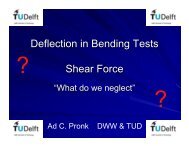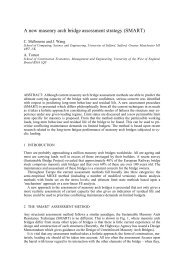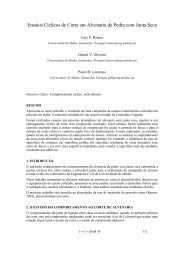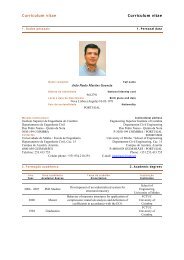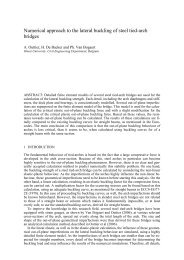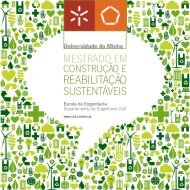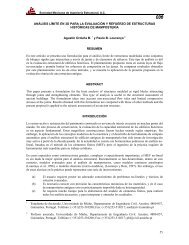Sustainable Construction A Life Cycle Approach in Engineering
Sustainable Construction A Life Cycle Approach in Engineering
Sustainable Construction A Life Cycle Approach in Engineering
Create successful ePaper yourself
Turn your PDF publications into a flip-book with our unique Google optimized e-Paper software.
New composite high performance silicate materials (fibre concrete FC <strong>in</strong> the form of high<br />
performance concrete HPC and ultra high performance concrete UHPC) could be used for construction<br />
of more strong, more durable and at the same time slender structures. The optimized<br />
lightened shape of structural elements demands less material and consequently thus has improved<br />
environmental parameters of the entire structure.<br />
5.1 Environmental parameters of concrete<br />
Evaluation of environmental impact of any structure is highly determ<strong>in</strong>ed by the quality of<br />
available data. There is no standard data set of unit embodied values for all components used <strong>in</strong><br />
concrete mix. One of the often used data source is Ökologischer Bauteilkatalog, latest version<br />
Passivhaus-Bauteilkatalog 2008 (Waltjen 2008) <strong>in</strong> which the data are based on UCPTE electricity<br />
mix. The associated values of embodied CO 2 , embodied SO x and embodied energy for<br />
different types of concrete and re<strong>in</strong>forc<strong>in</strong>g steel are shown <strong>in</strong> the Table 7. The data used for<br />
UHPC were taken from (Schmidt & Teichmann 2007).<br />
Table 7. Embodied environmental parameters of pla<strong>in</strong> concrete, steel fibre concrete and UHPC calculated<br />
us<strong>in</strong>g data from (Waltjen 2008) and (Schmidt & Teichmann 2007)<br />
Fibre content Embodied Embodied Embodied<br />
Type of concrete<br />
energy emissions CO 2 emissions SO 2<br />
% vol MJ/kg<br />
kg<br />
CO 2,equiv. /kg<br />
g SO x,equiv. /kg<br />
Ord<strong>in</strong>ary concrete C30/37<br />
(Waltjen 2008)<br />
0.0 0.8 0.13 0.50<br />
Steel fibre concrete (SFRC) 0.5 1.38 0.17 0.67<br />
Ultra high performance concrete<br />
(UHPC)<br />
1.0 1.44 0.24 NA<br />
(Schmidt & Teichmann 2007)<br />
Re<strong>in</strong>forc<strong>in</strong>g steel (Waltjen<br />
2008)<br />
- 13.0 0.80 3.60<br />
It is evident that fiber concrete itself has unit embodied values higher <strong>in</strong> comparison to the<br />
ord<strong>in</strong>ary pla<strong>in</strong> concrete. This is due to the fact that steel and plastic fibers have higher values of<br />
embodied environmental parameters than pla<strong>in</strong> concrete itself. An <strong>in</strong>clusion of fibers <strong>in</strong> the concrete<br />
mix represents an additional <strong>in</strong>crease of embodied parameters. However, the material<br />
properties of fiber concrete enable the application for more slender structural elements with significantly<br />
less concrete content and without conventional re<strong>in</strong>forcement <strong>in</strong> th<strong>in</strong> parts of element<br />
cross sections.<br />
5.2 Design of possible alternatives for the column made of concrete<br />
M<strong>in</strong>imum permissible transverse dimensions of a column cross-section are given <strong>in</strong> the paragraph<br />
5.4.1.1 of the EN 1002-1-1 standard:<br />
200 mm for columns of solid section, cast <strong>in</strong> situ (vertically)<br />
140 mm for precast columns cast horizontally.<br />
Two alternatives of columns are considered (Fig. 8):<br />
Alt. A: Square cross-section from ord<strong>in</strong>ary concrete with conventional steel re<strong>in</strong>forcement<br />
Alt. B: Hollow core cross-section from high performance concrete<br />
54


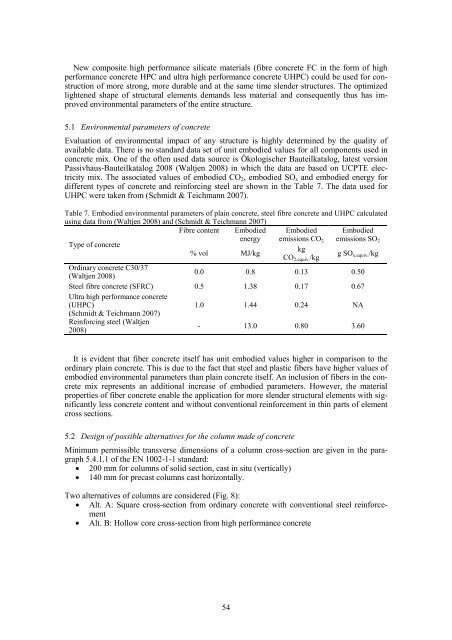
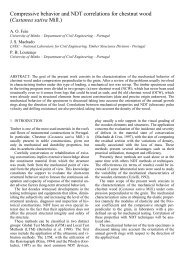
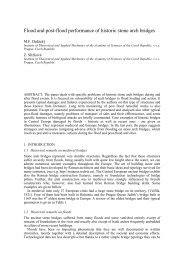
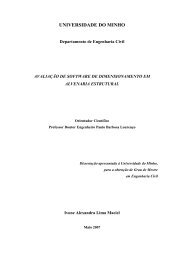
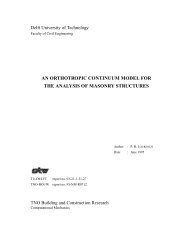

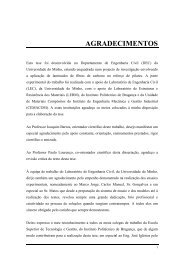

![Weibull [Compatibility Mode]](https://img.yumpu.com/48296360/1/190x134/weibull-compatibility-mode.jpg?quality=85)
